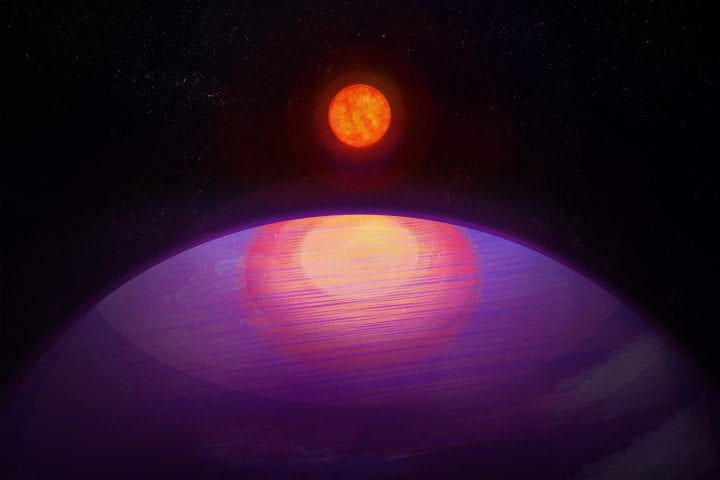Researchers find exoplanet that appears to be too big for its sun
UCI astronomer says the discovery scrambles solar system models

A research team including UCI astronomers has discovered an exoplanet that is far too massive for its sun, casting doubt on what was previously understood about the formation of planets and their solar systems. Using the Habitable Zone Planet Finder instrument connected to the Hobby-Eberly Telescope at McDonald Observatory in Texas, the researchers detected planet LHS 3154b, which is 13 times more massive than Earth, orbiting the “ultracool” star LHS 3154, which is nine times less massive than our sun. The finding is the subject of a paper published today in Science.
“The HPF instrument was designed to study exoplanets orbiting dwarf stars, so in that regard, this was a perfectly normal project, but the results were anything but ordinary,” said co-author Paul Robertson, UCI associate professor of physics and astronomy and HPF project scientist. “This is the first time such a high-mass planet has been found orbiting close to a lower-mass star, and it calls into question our previous assumptions about interactions between stars and planets.”
Co-author Suvrath Mahadevan, the Verne M. Willaman Professor of Astronomy and Astrophysics at Penn State, explained that stars are believed to be created from large clouds of gas and dust. The remaining material can eventually accrete to become planets. “The planet-forming disk around the low-mass star LHS 3154 is not expected to have enough solid mass to make this planet,” Mahadevan said. “But it’s out there, so now we need to reexamine our understanding of how planets and stars form.”
In the paper, the researchers note that the heavy planetary core of LHS 3154b inferred by their measurements would require a larger amount of solid material in the planet-forming disk than current models would predict. The finding also raises questions about prior understanding of the formation of stars, as the dust-mass and dust-to-gas ratio of the disk surrounding stars like LHS 3154, when they were young and newly formed, would need to be 10 times higher than what was observed in order to form a planet as massive as the one the team discovered.
Robertson said the HPF, which can detect planets orbiting the coolest stars outside our solar system, is the perfect instrument for making such a groundbreaking discovery. “The Habitable Zone Planet Finder is an astronomical spectrograph that uses infrared detection to find and characterize planets orbiting relatively cold stars,” he said. “By ‘habitable zone,’ we mean a region in which planets have the potential for having liquid water on their surfaces, a key ingredient for life. The sensitivity of the HPF instrument is what enabled us to establish the odd relationship between this massive planet and its dwarf star.”
Joining Robertson on this research project was his UCI physics and astronomy graduate student Rae Holcomb. The work was funded by NASA, the National Science Foundation and the Heising-Simons Foundation.